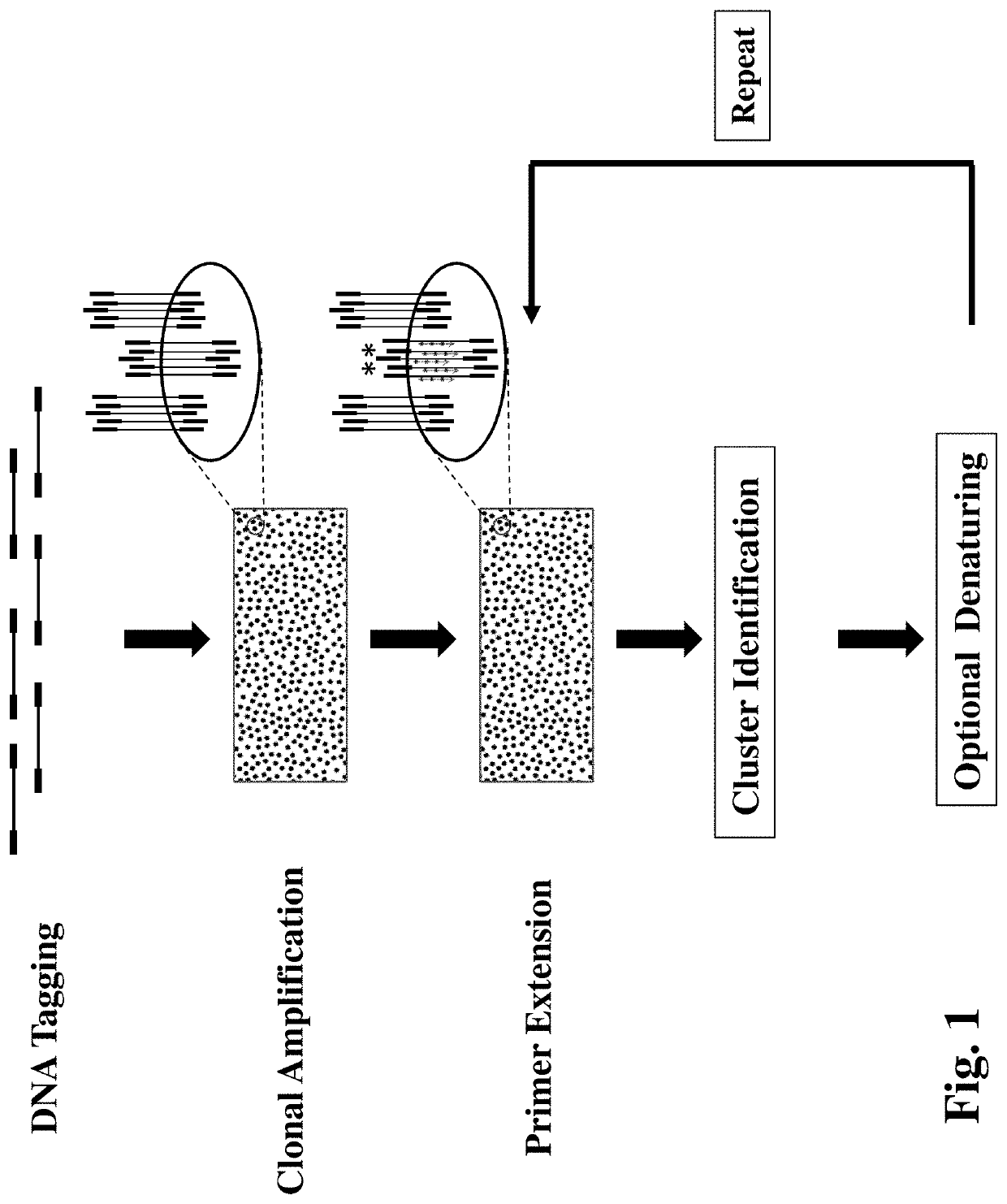Method for Detecting multiple DNA Mutations and Copy Number Variations
a technology of copy number variation and dna mutation, applied in the field of biotechnology, can solve the problems of low specificity, low sensitivity of the probe, and limited starting materials in clinical samples, and achieve the effect of simplifying the detection procedure and lowering the cost of materials
- Summary
- Abstract
- Description
- Claims
- Application Information
AI Technical Summary
Benefits of technology
Problems solved by technology
Method used
Image
Examples
examples
[0072]The invention is further illustrated in more details with reference to the accompanying examples. It is noted that, the following embodiments are only intended for purposes of illustration and are not intended to limit the scope of the invention.
experiment 1
a Somatic Mutation in a Cell-Free Circulating DNA Sample
[0073]This example demonstrates how to use the invented method to detect rare somatic mutations in cell-free circulating DNA (cfNA) samples. It shows how to measure both the mutation and wild-type sequence in a DNA sample to determine allele frequency rate and used the data from mutation primer and wild-type primer to identify the mutation sequence with higher accuracy.
[0074]A cfDNA sample is extracted from a patient's blood using a commercially available extraction kit such as MagMAX Cell-Free DNA Isolation Kit (Thermo Fisher Scientific, Waltham, Mass.) and QIAamp circulating nucleic acid kit (Qiagen, Valencia, Calif.).
[0075]A double-tagged DNA preparation is made from the extracted cfDNA using an illumina-compatible NGS sample preparation kit such as NEBNext® Ultra™ II DNA Library Prep Kit for Illumina® (NEB, Ipswich, Mass.) and Truseq DNA PCR-free library preparation kit (Illumina, San Diego, Calif.). The PCR-free preparatio...
experiment 2
Multiple Germline Mutations in a Genomic DNA Sample
[0082]This method can be applied to detect multiple germline mutations in a genomic DNA sample.
[0083]A genomic DNA (gDNA) sample is isolated and purified from tumor cells using a standard method for gDNA extraction. PureLink™ Genomic DNA Mini Kit (Thermo Fisher Scientific) or Blood & Cell Culture DNA Mini Kit (Qiagen) can be used for extraction of high quality gDNA.
[0084]Make a double-tagged gDNA sample and perform cluster generation as described in Example 1. The outcome product is clonal DNA clusters each with about 1000 single-stranded DNA molecules covalently attached on the surface of the flow cell.
[0085]A first mutation specific primer, a DNA polymerase (e.g. Taq DNA polymerase), a 4-dNTP mixture with dCTP being substituted by fluorescent dCTP are added to the flow cell. Perform the annealing and extension reaction in a standard PCR buffer (10 mM Tris-HCl, 50 mM NaCl, 1.5 mM MgCl2, pH 8.3) at 60° C. for 5 minutes to make a fir...
PUM
| Property | Measurement | Unit |
|---|---|---|
| Ratio | aaaaa | aaaaa |
| Fluorescence | aaaaa | aaaaa |
| Level | aaaaa | aaaaa |
Abstract
Description
Claims
Application Information
 Login to View More
Login to View More - R&D
- Intellectual Property
- Life Sciences
- Materials
- Tech Scout
- Unparalleled Data Quality
- Higher Quality Content
- 60% Fewer Hallucinations
Browse by: Latest US Patents, China's latest patents, Technical Efficacy Thesaurus, Application Domain, Technology Topic, Popular Technical Reports.
© 2025 PatSnap. All rights reserved.Legal|Privacy policy|Modern Slavery Act Transparency Statement|Sitemap|About US| Contact US: help@patsnap.com


